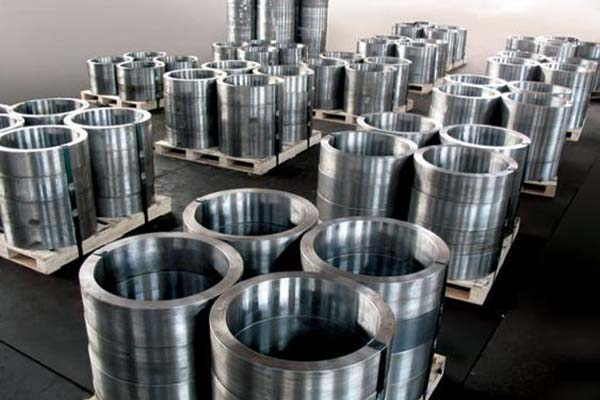Forging is to make the metal blank in the upper and lower forging die in the mold chamber forced plastic flow molding, so as to obtain the shape of the forgings consistent with the mold chamber, referred to as die forging. According to the fixed type of forging die, it can be divided into fixed die forging and tire die forging.
1. Fixed die forging forging die is composed of upper die and lower die, respectively fixed on the hammer head and anvil block of the die forging hammer, the alignment of upper and lower die is mainly guaranteed by the die forging hammer. When forging, the heated blank is placed in the lower die chamber, and the hammer head drives the upper die to forge, so that the metal flows and fills the die chamber to form the forging, and the excess metal is pressed into the flying edge groove to form the flying edge, and then it is cut off after forging. Die forging parts with complex shapes, need to open several die bore for die forging, so that the billet in several die bore gradually forming, finally forging into the desired shape in the final die bore. Fixed die forging has the advantages of high productivity, good forging quality, complex shape and saving metal material, which is the basic method of die forging. But it requires expensive die forging equipment and die, the size of the forging is limited by the tonnage of die forging equipment. Therefore, it is only suitable for mass production.
2. Tire die forging tire die forging is carried out on free forging equipment, without die forging equipment, the forging die used is relatively simple, high productivity, forging quality is better, can save metal, reduce cost. However, in general tire die forging, the upper and lower die must be moved manually, which has high labor intensity and affects the further improvement of productivity. Therefore, it is widely used in the production of small forgings in medium and small batches. In most practical closed die forging operations, the temperature of the forging material is higher than that of the die. The effect of strain on yield stress is insignificant, but the effect on deformation velocity becomes more and more important. Therefore, the dependence of yield stress on deformation rate is obviously different for different metals and alloys when most metals are hot forged above recrystallization temperature. At room temperature, the effect of deformation rate on yield stress of most metals is very small.
Post time: Dec-01-2021

